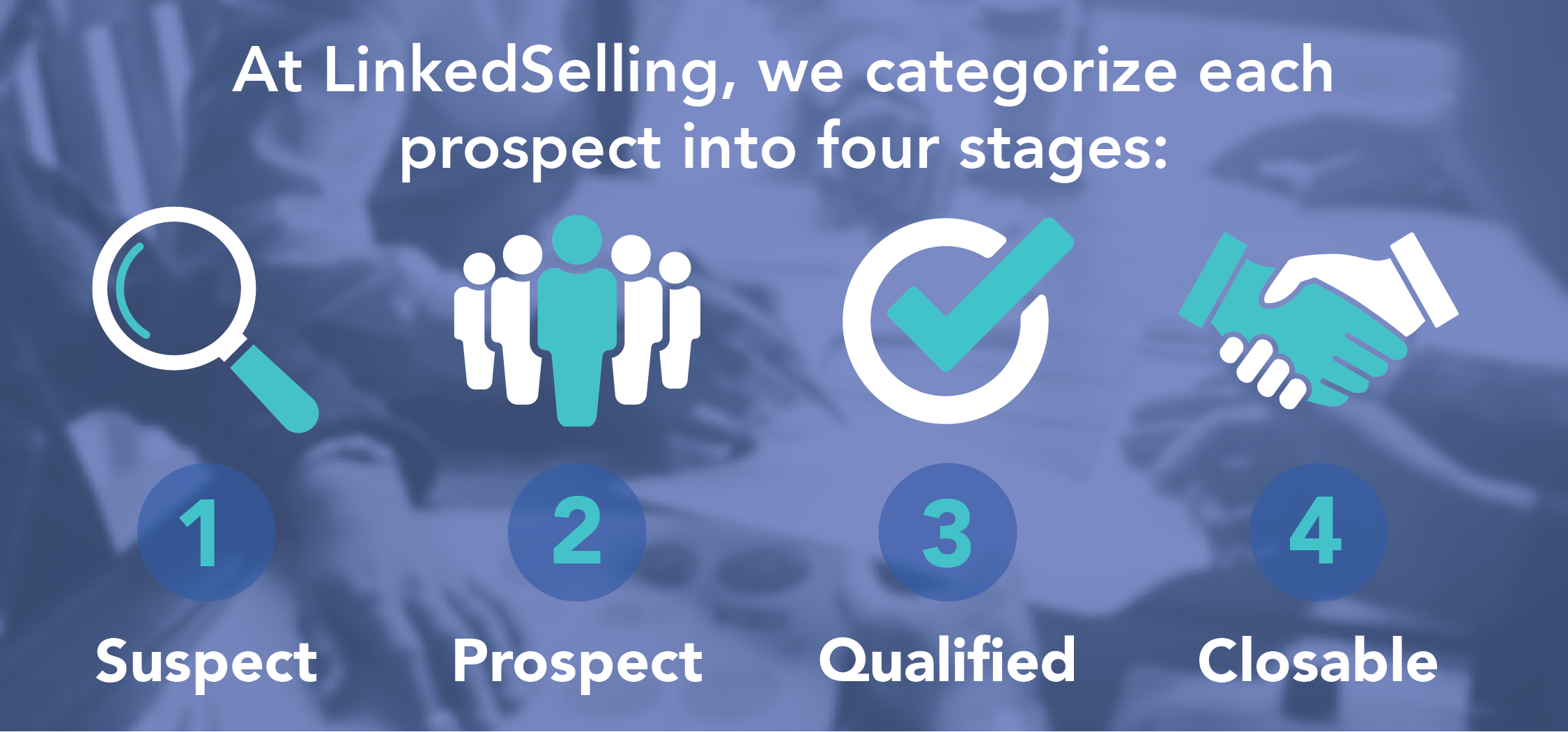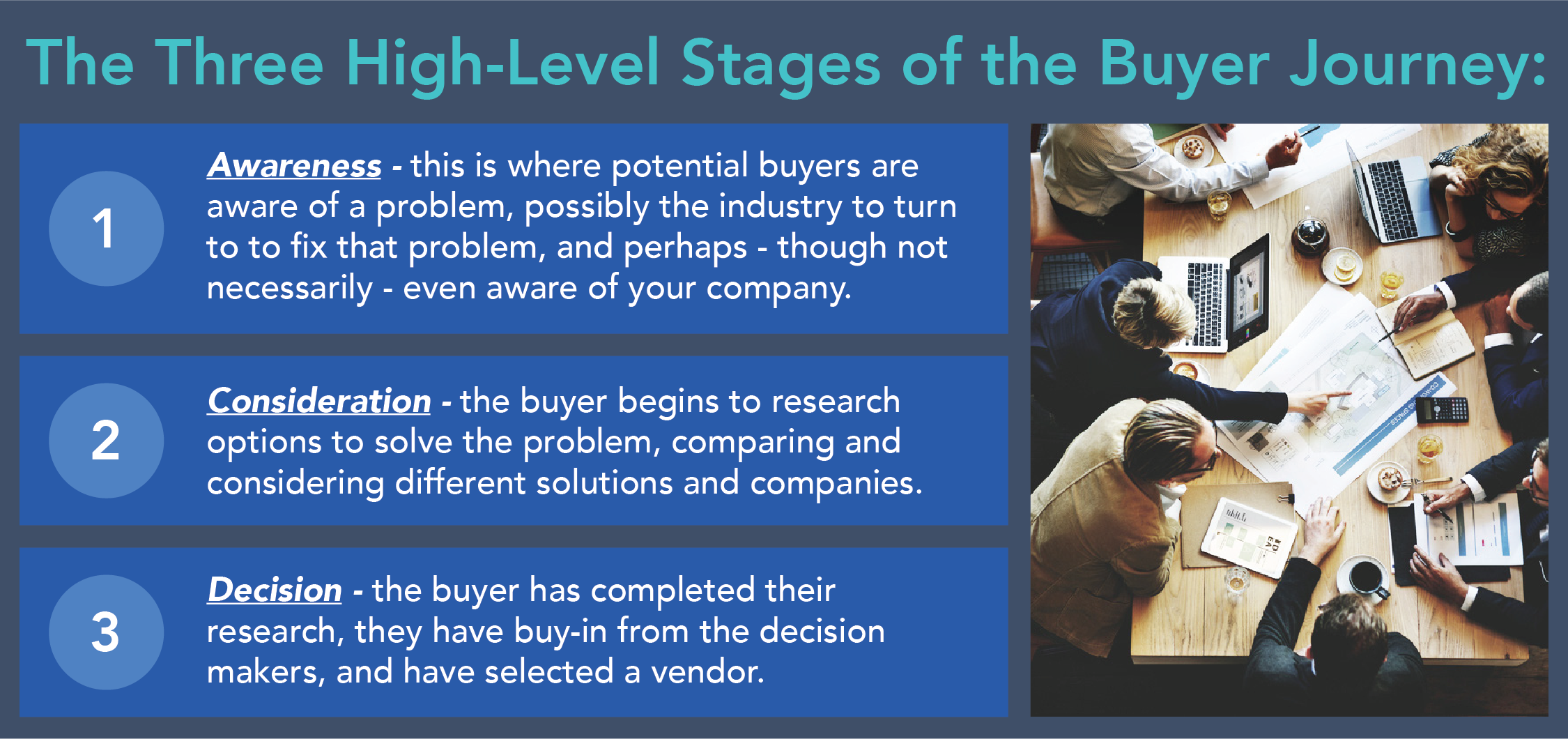Posted by LinkedSelling in B2B Lead Generation & Sales Development


The rise of the biggest change in selling over the years correlates with the rise of the internet and the information age. It has everything to do with the fact that the buyer now plays a greater role in researching on their own, before ever speaking to a sales person to help them make a decision.
- Forrester Research reports that 74 percent of B2B buyers do at least half their research online before making an offline purchase.
- According to SiriusDecisions, 70% of the buyer’s journey is complete before a buyer even reaches out to sales, not only that, they also report that 67% of the buyer’s journey is now done digitally.
- Corporate Executive Board says that 57% of executives reach a decision before they contact sales.
It is now a “buyer’s market” in the sense that the buyer’s journey - going from searching for a solution to signing a contract - is far more complex than it used to be. Buyers are more sophisticated and their decision-making process is often longer than it used to be. Ultimately, it means that your sales reps have less opportunity to influence your prospect’s decisions.
Knowing this, how can sales teams facilitate a smoother sales process, remove friction and close more sales? Simply by understanding today’s buyer journey, how it’s changed in recent years, and knowing how to align the buyer journey with their marketing and sales process.
The buyer journey as we define it at LinkedSelling is this:
The decision-making-road the prospect travels on, morphing from total stranger, to visitor, to prospective buyer, and finally, to client and advocate. The buyer’s journey demands different approaches from marketing and sales at each stage of the journey.
In this article, you will learn:
- Each step a B2B buyer takes that leads to a purchase decision
- What you need to know at each step
- How to remove friction in the buying process by lining up your marketing and sales efforts to support that journey
Let's Talk
Schedule a strategy call with our team to get more qualified sales appointments
Shifts in Understanding the Buyer Journey
On the surface, it’s very simple. Your buyer knows nothing about your company. That’s step one. So you set out to educate them. But do you know exactly what they’re looking for? Do you know what the problem is? Do you know how long it will take them to buy (what’s their time frame)? Do you know their budget? Do you know who’s involved in making the purchase decision and what variables and competition they’re considering?
What do they really need to know and when?
What are their motivations and pain points?
Where are they getting their information?
Who else are they talking to?
All of these things are important for you to know. Companies who are careful to map the client’s buyer journey can more easily see how to align their efforts to sell with the way their prospects and customers prefer to buy. This includes understanding how a prospective buyer finds you, learns about you, engages with you and purchases from you.
From the buyer’s perspective, knowing how to align your approach to their self-guided journey means:
- You gain their trust and improve the buyer experience - building value for your product or service
- You meet them where they’re at (ie you’re not trying to address things they’re not concerned with at this stage, or you’re not trying to force them to jump into the next stage before they’re ready).
- You set yourself apart from other “vendors” because you’ve become a resource, not just a company trying to push sales
- You move more prospects through the pipeline and increase your closing rate
This knowledge will help you provide a better and more fruitful experience for your new customer, and more top-line revenue for your company. The risk of NOT doing this will leave your sales team vulnerable to leaving sales on the floor, unable to close frustrated prospects - resulting in less sales.


There’s no question: You will see improvements in sales effectiveness if you can align your sales process to the buyer journey.
As we dive into each step of the buyer journey and where (and how) your marketing and sales should come into play, just remember that the buyer journey is NOT linear. It’s dynamic. As new objections come up, new competition, and new questions and concerns, the buyer experiences more of an ebb and flow instead of a straight path.
Stages of the B2B Buyer Journey
While there are many ways to break it down, there are three basic stages your buyer will move through, checking off certain boxes before they can move along their journey (however, remember that this is often a dynamic process, not always linear).


Awareness
From Stranger to “Suspect”
Here our sales team considers the buyer a “suspect” because they are aware of a pain and will start considering their options. The buyer is still a stranger to you, or maybe a “visitor” to your site but they are far from making a decision. Here is a good place to remember that shift - so marketing and sales really need to move from a “product or brand” promotional standpoint, to more of a focus on the pain points of the buyer. Your teams must expose the “suspect” to their pain - while creating an awareness that your company exists - and can help them with that pain.
How do they do that? Marketing and sales at this point are producing content that talks about the pain - and potential solutions to the problem. This may include inbound marketing, advertising, content marketing, 1-to-1 outreach, social media marketing and more.
As the primary focus is to simply get on the radar of the “suspect” and really bring the pain to forefront, if you can, it will help to get them on the phone and actually talk about what they are dealing with (and to really turn the knife, talk about what might happen if they don’t fix it appropriately).
Consideration
From “Suspect” to “Prospect”
As the “suspect” starts to investigate their options, they may move on to become “prospect” as they dive further into the research. What does their research look like and how can you make sure you’re part of it?
At first the research will be broad. The potential buyer will look for more information that educates them about the problem and start diving into case studies and reviews. They’ll begin to recognize and develop the criteria that really fits their needs as they pursue different options available to them.
At this point, your sales team and marketing needs to keep this in mind with very specific educational materials and case studies that will address the “prospect’s” questions. Here lead generation and the beginning of your sales development efforts need to come in strong, again, especially as the buyer is doing a lot of this research on their own...
The data shows that prospects are researching vendors now more than ever and they rely heavily on reviews and recommendations from peers, friends and family.
- In 2016, 62% of B2B buyers were relying more on peer recommendations than on their own research.
And, according to State of B2B Procurement study from Acquity Group, some 94% of B2B buyers report conducting some degree of research online before making a business purchase


At this stage, besides the educational material and case studies, marketing and sales really need to be working together using a multi-channel channel approach. As the buyer moves from “suspect” to “prospect”, you want them to be familiar with your company. A multi-channel lead generation approach increases the amount and types of touchpoints with your prospects. They’re not just on one channel. You shouldn’t be either.
From “Prospect” to “Qualified”
As your prospect clearly defines their challenge and really starts narrowing down their choices, they’ll start looking more at specific offerings. Here your lead generation and sales development efforts need to move from “nurturing” and staying top of mind, to really qualifying.
This is where marketing can really utilize automation via surveys, and specific marketing funnels to help qualify. On the sales side, this is really where your sales development reps come in. They need to start talking to and qualifying these prospects. After you have conversations with the prospect, asking them pertinent qualifying questions, if deemed to be a good fit sales can then move them from labeled “prospects” to “qualified”.
The primary goal at this stage of the sales process is to connect with as many prospects as possible, qualify them, and give them the next step.
Such next steps could be a:
- Demonstration
- Strategy call
- Assessment
- Consultation
- Technical call
Your SDR team can do this via strategic outreach sequences that include email, phone calling, and social media messaging.
One note on phone calling - it might seem that we’ll backtrack a little here because while the research shows that buyers are utilizing a self-directed research approach, studies also show that they are open to communication.
The data from Rain Group Center for Sales Research shows that 71% of buyers are open to hearing from sellers when they’re “looking for new ideas and possibilities to drive stronger results to improve [their] business.”
That’s a primetime touchpoint opportunity you definitely want to take advantage of. Once you get the qualified prospect to book a call with your closers, realize that you might need to speak with more than one person who influences the decision and that there will likely be a high focus on requirements and on ROI.
Decision
From “Qualified” to “Closable”
At this point in the buyer journey, your qualified buyer has drastically narrowed their options and needs buy-in from all the decision makers and will need materials supporting pricing, ROI, results and more.
Sales can move the qualified prospect to “closable” when they see that commitment is real and the conversation gets more serious. Here specifics on implementation, terms, and pricing will likely be a big concern for the buyer.
Marketing needs to provide materials that speak to the decision makers, providing more specific and advanced information for using your products or services more effectively. It’s the time to really focus on the value of your offerings. This will also help re-sell them on your services when it’s time to renew - or offer referrals!
Sales needs to be the consultant, who has insight, who can answer specific questions and resolve objections, and who can prove the value of your solution over that of the competition.
At this stage though, sales is looking for a decision. That means you’re looking for a “Yes” or a “No”; a “Maybe” or “I’ll think about it” is not a decision.
Have You Mapped Your Clients’ Buyer Journey?
Remember that as you eliminate friction and align to the buyer journey, you can’t always control sales outcomes. That's why sales really is a numbers game. However, in our experience, understanding the buyer journey of your prospects, and how they move through certainly helps empower sales and marketing to provide the right kinds of content and touchpoints at the right time.
There are some specific questions you need to be able to answer in order to begin to map the buyer journey of your prospects. Download a pdf copy of these questions and make the shift from a product and brand sales focus to a buyer focus.
Let's get you talking to your best prospects?
When you schedule a call with one of our Client Strategists you'll learn about what it looks like to put all the pieces together so you have a reliable, proactive
system to get qualified sales appointments with a multi-channel approach.
